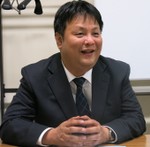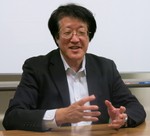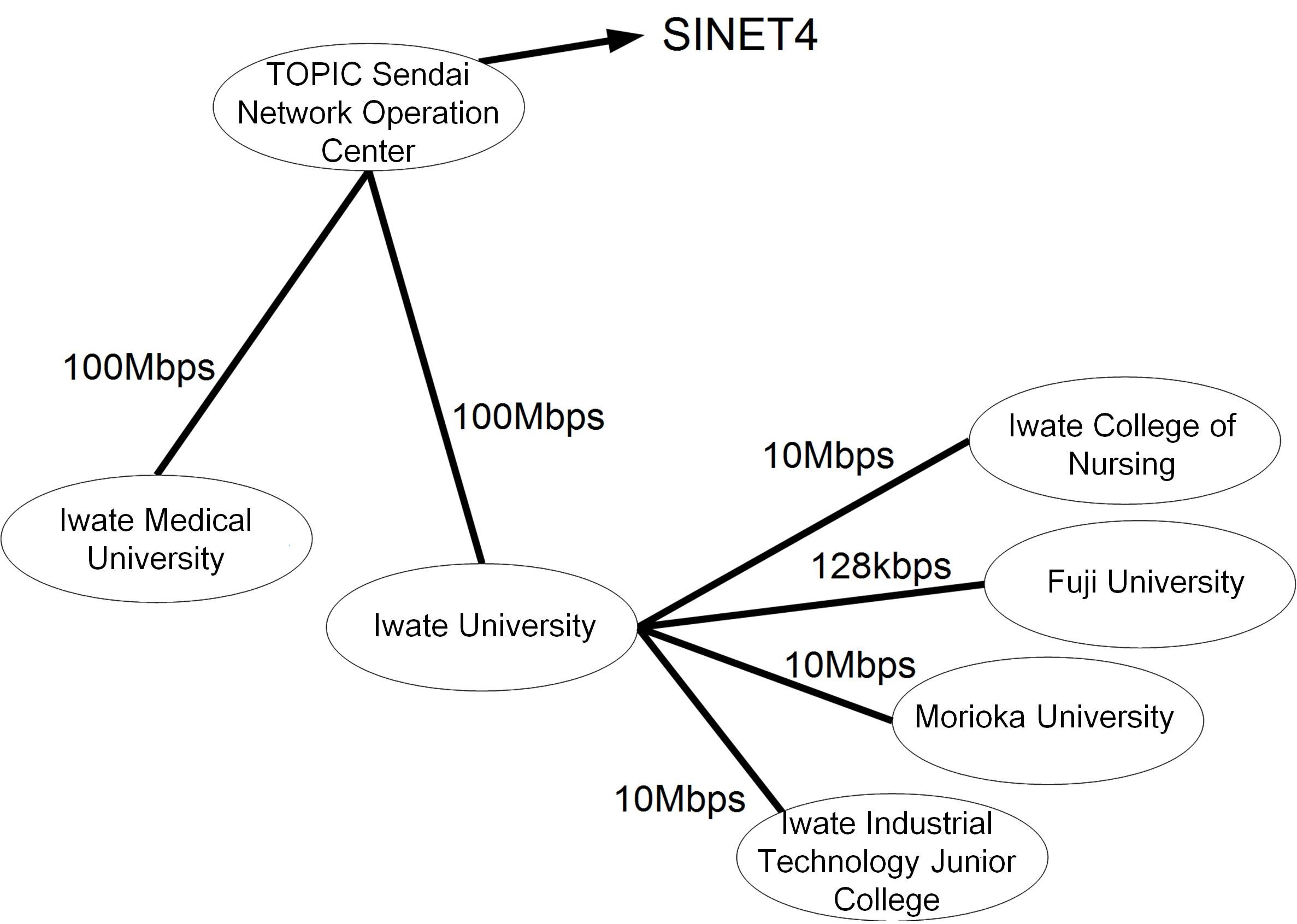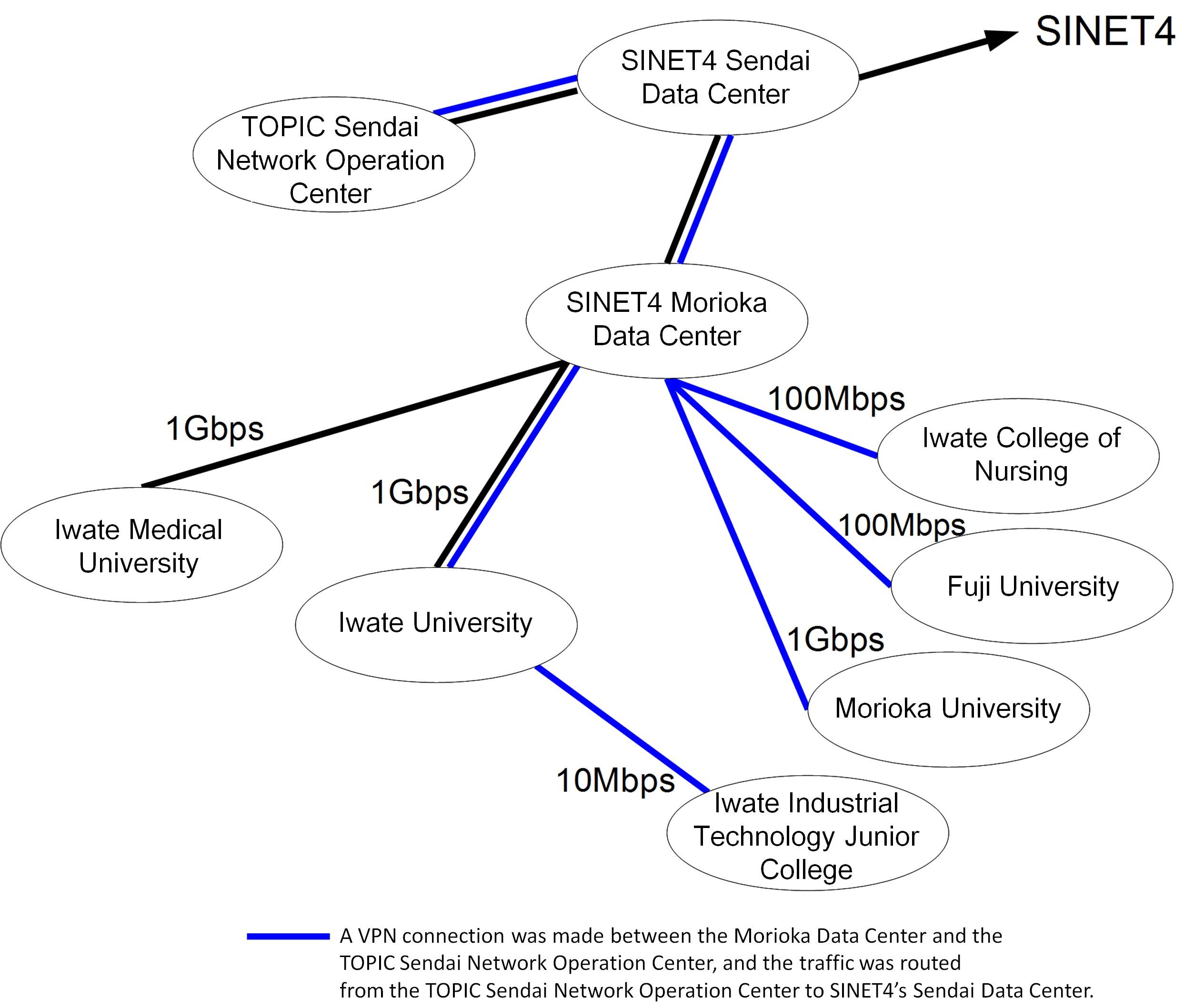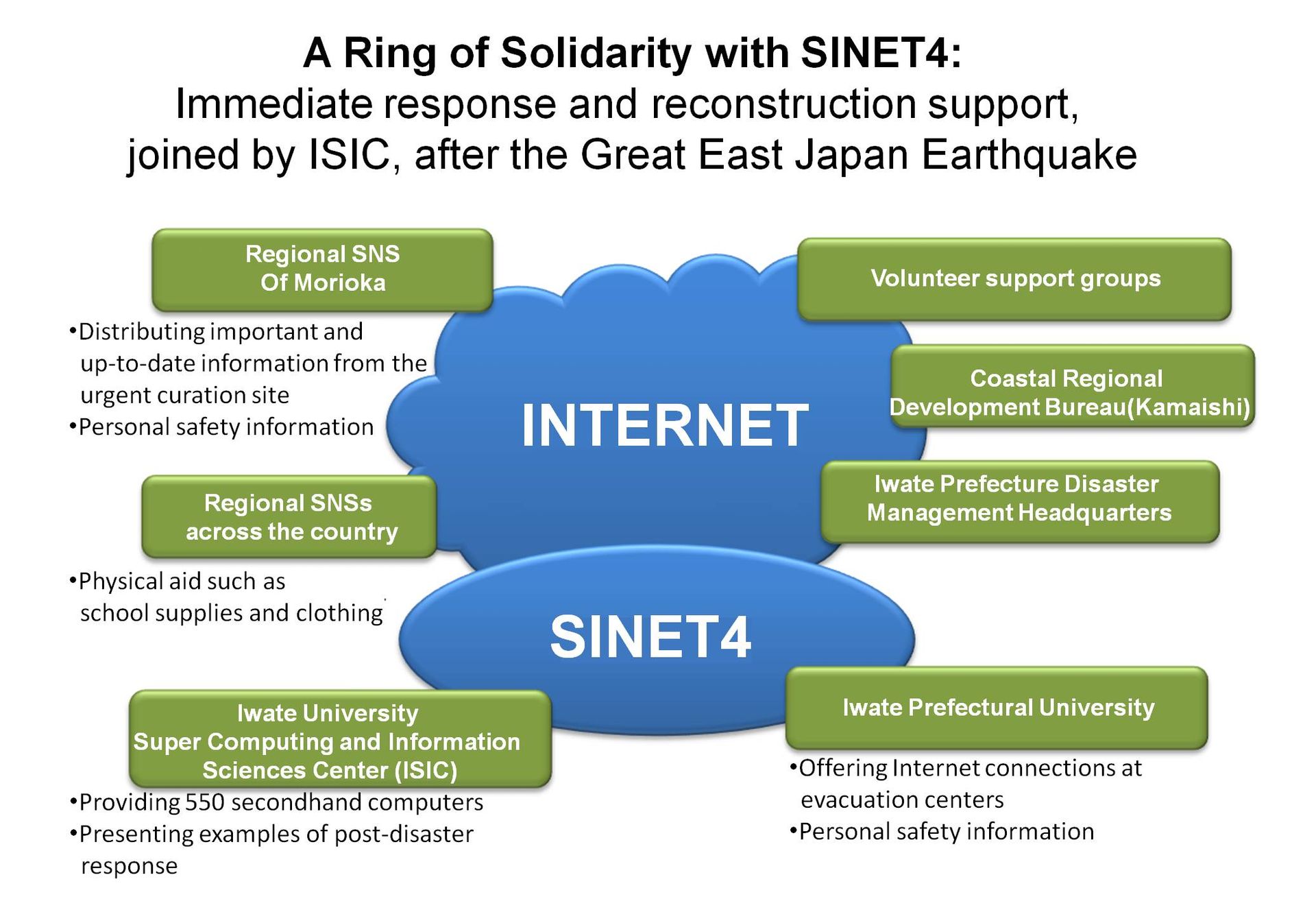
Leading an upgrade of the intra-university infrastructure and regional computerization through the Morioka Data Center
Iwate University, a national university corporation, conducts education and research based on advanced information technologies. We talked with two associate professors at the Iwate University Super Computing and Information Sciences Center (ISIC), Takahiro Nakanishi and Hitoaki Yoshida, to get an overview of their activities, the effect of SINET4’s adding a new node, and its contribution in the wake of the Great East Japan Earthquake.
(Interview date: November 5, 2013)
First, can you give us an overview of ISIC?
Nakanishi:ISIC is in charge of building and operating the entire information infrastructure, including the networks, and engages in different activities, including helping to build information systems for research and education and provide basic education in information processing utilizing multimedia and distance education. Two years ago, it introduced virtualization technologies to build private clouds for the education and research services provided at individual faculties. It also strives to comprehensively improve security. It not only protects against external threats, but also strictly monitors the outflow of data from the university to outsiders.
Yoshida:Aside from building an intra-university information infrastructure, another key role ISIC plays is to assist in computerizing the region. Around 15 years ago, it established a Research Society on Networking and Virtual Community, which facilitates community exchanges with telecommunications engineers in the area. Joined by engineers and researchers from various organizations in governmental, academic, business, and other private sectors, it holds lecture meetings and sessions for mutual activity reports. These activities mainly take place in Iwate Prefecture, but these days, we are seeing more and more participants from the Tokyo area and other remote regions.
SINET4 recently established a node in Morioka.
What impact have you seen from this?
Nakanishi:It has led to a significant improvement. In the past, connections were made via Tohoku University. The traffic was always at the bandwidth limit of 100 Mbps. That severely affected our university’s research and educational activities. For example, one of our art courses gave students an assignment to upload their own work onto a video site so it could be assessed. However, the line’s bandwidth was used up and students were unable to upload their work as they pleased. The lecturer of the course was so upset he complained he couldn’t teach the course in that environment. However, since SINET increased the bandwidth to 1 Gbps, high-capacity multimedia content can now be handled with no problems.
Another significant effect was seen at other neighboring universities. Our university has been playing a central role in running the Morioka Network Operation Center, which is a connection point for the Tohoku Open Internet Community (TOPIC). In the past, Morioka University, Iwate Industrial Technology Junior College, and other institutions connected to SINET through our university. However, as our university had already reached its bandwidth limit, it was difficult to provide enough bandwidth to other universities. This issue was also resolved through the shift to SINET4.
SINET is expected to give you a huge advantage in speeding up cutting-edge research at your university
Yoshida:Indeed. We have introduced a high-performance server for large-scale computing, but as our computing power increases, the volume of data used in our research is constantly growing. Take structural analysis, for example. These days, an enormous amount of finely meshed data is accumulated chronologically. Even though a huge amount of research data is collected, it can’t be fully used if the network’s performance fails to keep up with the increase in data volume. In this sense as well, the bandwidth expansion from SINET4 had a very beneficial effect.
Has SINET4 brought any improvements in operation and management?
Nakanishi:Iwate University works with other universities and educational institutions in the United Graduate School of Agricultural Sciences and in the Iwate Higher Education Consortium. It is also working to develop credit transfers and other programs. Here, distance learning lectures are offered using a video conferencing system. In the past, the inter-university network environment was so tight that we had a separate VPN line exclusively for distance learning. Now, this has been integrated into SINET, and we no longer need to separately manage devices and operate networks. The university can now flexibly respond to requests from teaching staff to use the network in their own research.
Let’s change the subject a little.
We heard that ISIC has made various contributions to post-earthquake reconstruction support activities.
Yoshida:Yes, in our learning support project, ISIC delivered school supplies contributed from all over the country to the children in evacuation centers. Fortunately, people donated an enormous quantity of these supplies. ISIC registered on the portal to support children’s learning run by the Ministry of Education, Culture, Sports, Science and Technology, and worked with its library section to carry out distribution in communications with elementary, junior high, and senior high schools in regions affected by the disaster. Computer manufacturers donated client computers whose lease contracts with our university have expired and we refurbished them and negotiated software licenses in an effort to offer them to the afflicted areas for free.
Immediately after the Great East Japan Earthquake, ISIC staff visited disaster-affected areas to conduct various relief activities. In fact, SINET was very helpful in these actions. When many people, including volunteers, are engaged in relief efforts, the biggest problem is that local situations are unknown. As the phone lines are too busy to be useful, the network alone is reliable in that situation. In this respect, SINET is very reliable and accessible. It helped people understand the circumstances so they could provide support for the afflicted regions. It is not an exaggeration to say that our relief activities would have been nothing without SINET.
Lastly, can you talk about your aspirations for the future and your expectations of SINET?
Yoshida:After experiencing the Great East Japan Earthquake, we were reminded of the importance of networks in disaster-control measures. In the future, our university will also actively use SINET for data backup and BCP. In the previous 100 Mbps environment, it was frankly difficult to use the network for those purposes. Today, however, we have sufficient bandwidth and can consider many different systems. And I hope SINET will help us use the supercomputers and other computer resources owned by other universities and research institutes.
Nakanishi:I have been using SINET since I was a student. I feel that its performance and reliability has improved at a very remarkable pace. It is an infrastructure that is now indispensable to university operations. I hope it will continue to provide a stable environment and really hope its upper-layer services will be further enhanced.

